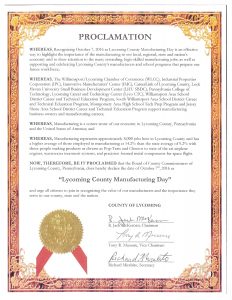Digital Innovation in Consumer-Goods Manufacturing
Consumer-goods companies have begun to capture value by applying digital tools to manufacturing. Here’s a look at how they’re doing this today—and how they might do so tomorrow.
(McKinsey Quarterly — Søren Fritzen, Frédéric Lefort, Oscar Lovera-Perez, and Frank Sänger: November 2016) Consumer-goods companies have been at the forefront of digital innovation in commercial areas such as marketing and sales. Supply chain and operations have been less of a focus for their digital efforts, but recently, leading consumer-goods companies have started to explore the use of digital solutions in manufacturing processes. This is a natural development as Industry 4.0—the digitization of the entire manufacturing value chain—is slowly becoming a reality.
Some consumer-goods companies, however, are unsure where to start: Which aspects of manufacturing can benefit most from today’s digital technologies? And what should leading-edge companies set their sights on next? In this article, we examine the two most prevalent ways in which consumer-goods companies are using digitization in manufacturing: applying digital tools to lean transformations and using advanced analytics to optimize specific manufacturing processes. We then look at the next horizon of opportunity for digital manufacturing in the consumer-goods sector. Finally, we discuss the organizational enablers that can help digital-manufacturing efforts succeed.
Taking lean to a new level
Lean transformations have already had a dramatic impact on many companies, but digital solutions are taking lean operations to a new level. Consider the case of a food-manufacturing company that invested in lean techniques but didn’t have a standard process or system for collecting data, tracking performance, and sharing information. The company’s data—sales- and operations-planning data, machine-level data (such as those in sensors), benchmarks, operating standards for equipment, training materials, work plans, and so on—resided in several different databases and repositories, making it difficult for supervisors to find and analyze information. For instance, due to ad hoc tracking of equipment downtimes, supervisors never knew the exact quantity of goods produced until shipping time, when shortages could disrupt the entire supply chain.
Following a practice that has worked well in other industries, the company consolidated data and assets into a cloud-based digital hub. The hub contains three suites of tools to support day-to-day lean operations: a performance-tracking and management system, a set of modules for assessing operational capabilities and planning improvement initiatives, and a platform for best-practice sharing and real-time collaboration.
Supervisors can now access company-wide information on intuitive dashboards and heat maps, allowing them to detect performance gaps and compare metrics by product, site, and region. They can easily access detailed historical performance data or information on specific operational topics, such as the breakdown of overall equipment efficiency (OEE) by category. Since the hub automates data collection, data exports, tracking of key performance indicators, and generation of email reports, employees’ paperwork has substantially decreased.
The digital hub also introduced a new culture of collaboration and continuous improvement. For instance, all functions now systematically track and share equipment-downtime information via the hub. The shared data enable more productive cross-functional discussions about production problems, including root causes and potential solutions. Frontline workers are thus more likely to discover and resolve issues in real time, preventing small problems from becoming major disruptions. Staff members can submit new best practices or improvement ideas at any time, which makes them feel more invested in the transformation. And scaling up is easy, with managers able to deploy the new digital tools to new sites or business lines rapidly, using minimal resources.
After launching the digital hub, some of the company’s factories improved OEE by as much as 20 percent within a few months.
Unlocking manufacturing insights through advanced analytics
Leading consumer-goods companies have already scored big wins by using advanced analytics in a number of manufacturing processes. In our view, some of the highest-impact developments have been in quality control … predictive maintenance … and supply-chain optimization.
Quality control. A potato-chip manufacturer wanted to ensure that its products had a consistent taste, especially when it came to “hotness,” or spiciness. In the past, it had assessed hotness by conducting taste tests in which a panel of human testers rated various taste parameters (for example, rating the hotness level on a scale of one to ten)—an expensive and unreliable process, since taste is subjective. To increase accuracy, the manufacturer began using infrared sensors to identify and measure recipe parameters associated with hotness. It then developed customized algorithms to process the sensor data and determine how they were correlated with the recipe. Researchers also compared the sensor data with the results of a taste-test panel for each batch. Together, this information allowed the company to create a quantitative model for predicting hotness and taste consistency. Within a year of implementing the program, customer complaints about variability in the flavor of the company’s chips dropped from 7,000 a year to fewer than 150—a decrease of 90 percent.
A margarine producer took a similar approach when attempting to understand how variations in multiple process settings could change product viscosity, an important quality parameter. During a pilot, the company tested variations of a number of parameters (such as temperature) and used sensors to evaluate emulsion crystal size, the primary determinant of viscosity. After analyzing data from the pilot—much more detailed and extensive than what it would have obtained in the past—the company was able to correlate viscosity levels with certain parameter variations. With this information, analysts created a model that predicted the viscosity that other parameter combinations would produce, which reduced the need for additional testing and helped the company identify optimum operational settings. This approach reduced the fraction of margarine tubs that had to be discarded because of quality issues from 7 percent to almost zero.
Predictive maintenance. Consumer-goods companies have begun to apply predictive analytics to maintenance activities, decreasing maintenance costs by 10 to 40 percent. A diaper manufacturer had historically replaced all cutting blades at certain intervals, regardless of their condition. This sometimes resulted in blades being replaced too soon—which increased costs—or too late, after their dullness had already affected diaper quality. To address these problems, the company turned to sensors that could detect microfibers and other debris—indications of blade dullness—by analyzing video feeds of diapers during the manufacturing process. After uploading the results of the analysis to the cloud, the company analyzed them in real time, using customized algorithms to determine the optimal time for blade replacement. By making adjustments to the maintenance schedule, the company lowered costs while improving product quality.
Supply-chain optimization. At a leading European dairy company, raw-milk purchases represented almost 50 percent of the cost base. Most of the raw milk was used to produce pasteurized milk; the company had to decide how much of the rest to use making butter, cheese, or powdered milk. The profits associated with each of these product categories fluctuated significantly, adding another layer of complexity. In the past, the company gave its regional businesses the freedom to make their own raw-milk allocation decisions, provided they followed a set of simple guidelines. In an effort to reduce costs and optimize supply-chain planning, the company used an analytics software solution that determined the best allocation plans for each region, taking into account variables such as available milk supply, regional factory capacity, and global demand. The improved allocation helped the company increase profits by about 5 percent without changing production volumes or capacity.
The next horizon for digital manufacturing
Consumer companies may also soon reap greater benefits from new digital tools that are continually being refined. Consider the following innovations:
- Augmented-reality tools. These tools provide data about the user’s environment in real time and facilitate information sharing. With smart glasses, for instance, employees can see and view new work orders while on the factory floor, or take and transmit photos of broken machines to offsite experts. We estimate that smart glasses could improve productivity by 5 to 10 percent by increasing the speed of operations, improving communication, and enabling paperless processes. Other augmented-reality tools could provide instructions to technicians responsible for complex changeovers or to warehouse workers searching for particular items.
- 3-D printing. Consumer-goods companies could use 3-D technology to facilitate product design and the manufacture of samples. At one shoe manufacturer, 3-D technology reduced the number of employees needed to create prototypes from 12 to 2, significantly decreasing costs. Companies could also use 3-D printing to print low-frequency replacement spare parts on demand at a production site rather than keeping them in stock or having them shipped after a breakdown. This approach would reduce the cost of holding spare parts, facilitate maintenance processes, and reduce downtime.
- Connected sensors and controls. Companies across industries have recognized the potential of the Internet of Things (IoT) and invested in connected sensors, such as those that can detect unusual machine vibrations and transmit their findings to monitors in a remote location, allowing offsite staff to direct corrective actions without having to travel to the facility. In heavy industries like mining, IoT sensors have reduced costs by 40 percent and downtime by half. While some consumer companies (such as the diaper manufacturer mentioned earlier) have invested in IoT sensors, most lag behind their peers in other sectors. We believe this will change as IoT offerings become more sophisticated and consumer companies realize the value at stake.
Organizational enablers for digital manufacturing
Some companies, especially those in the services sector, have already made changes to their organizational structures and strategy to support digitization efforts—for example, by buying niche technology players or creating innovation labs in talent-rich locations. Consumer-goods companies must now follow their example to gain maximum benefits as they digitize their own production lines. Since few consumer-goods companies today have the in-house capabilities needed to support the development and use of innovative digital manufacturing tools, they must upgrade their strategies for recruiting, training, and retaining data scientists, software engineers, and other technology staff. Competition for this talent is stiff, with demand four times higher than supply for some positions.
Corporate governance must also become more agile to promote digital manufacturing. The technology staff responsible for developing and testing tools should generally have the authority to set budgets and priorities, since they will lose momentum if they have to wait weeks for approval from upper management. When a major initiative does require leadership support or input, local teams should have easy access to decision makers.
Finally, large consumer-goods companies may need to pursue partnerships with smaller players or start-ups to gain essential digital capabilities. Many companies in other sectors have already pursued this strategy, with good results. For instance, Amazon acquired Kiva Systems, a small robotics company, to develop the cutting-edge robot technology now in widespread use across its warehouses. Partnerships among large players can also contribute to the development of solid digital platforms. Consider the recent collaboration between SAP, the enterprise-software giant, and UPS, a large package-delivery company. The companies ultimately hope to create a global network that provides industrial 3-D-printing services, on-demand production capabilities, and other services.
Consumer companies are already benefiting from the use of digital tools in marketing and sales—applying them to manufacturing is therefore an obvious next step. What is also clear, however, is that companies cannot simply implement digital solutions and hope to achieve lasting impact. They must also undertake an organizational transformation that involves acquiring new talent and capabilities, streamlining the decision-making process, making governance more flexible, and collaborating with external partners. This transformation touches every group within the company and will require the full commitment of employees at all levels. But the long-term benefits of digital solutions, which will usher in a new era of manufacturing efficiency, more than justify the effort.
(Søren Fritzen is a senior partner in McKinsey’s Copenhagen office. Frédéric Lefort is a partner in the Gothenburg office. Oscar Lovera-Perez is an associate partner in the London office. Frank Sänger is a senior partner in the Cologne office.)

